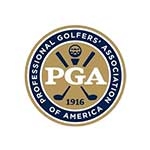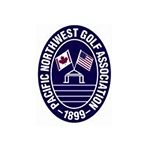Rule of the Month: Just In Case
By Sr. Rules Officials: Pete Scholz and Terry McEvilly
Click Here for the Rule of the Month Archive
Provisional Ball
Rule 18.3 exists for just one reason — it allows a player to play a provisional ball in certain situations to save time as a player may continue the play of a hole without returning to the spot of the last stroke if the original ball is lost outside of a penalty area or out of bounds. The Rule is not designed to allow the player a practice stroke or to put two balls into play in case the first ball played is unplayable or lost in a penalty area.
When and how to play a provisional ball and the procedure for doing so must be followed precisely. Many players have played a provisional ball when they were not allowed to, or failed to follow the procedure properly, resulting in further penalty, which could include disqualification.
Test your knowledge regarding the proper play of a provisional ball with the following questions.
Question: True / False
- A provisional ball may be played any time the original ball may be out of bounds or lost.
- A player intending to play a provisional ball must announce his or her intention by using the word “provisional” or making it clear that the ball will be put into play provisionally under Rule 18.3.
- A provisional ball must be played before the player goes forward to search for the original ball.
- A provisional ball may be played even if the original ball could be lost in a penalty area.
- The provisional ball must be abandoned if the original ball is found anywhere on the course.
- If the original ball is not found, but it is known or virtually certain to be in a penalty area, the player may continue with the provisional ball.
- Making a second stroke at the provisional ball from a spot farther from the hole than where the original ball is estimated to be makes it the ball in play and the original ball must not be played.
- If a player finds both the original ball and the provisional ball in the same area but is unable to identify which ball is the original or provisional, both balls are considered lost and the player must return to the spot of the previous stroke and put another ball into play.
- In stroke play, a player properly plays a provisional ball for the original ball that might be out of bounds. The original ball is found but the player is uncertain if it is out of bounds. The provisional ball may be used as a second ball and the hole completed with both balls.
- If a player plays a provisional ball when there is no reasonable chance that the original ball is lost outside of a penalty area or out of bounds, the provisional ball becomes the ball in play under penalty of stroke and distance.
Answers:
- False. Rule 18.3a. A provisional ball is only allowed if the original ball may be out of bounds or lost outside of a penalty area. If the only place the original ball could be lost is in a penalty area, a provisional ball is not allowed. If a provisional ball is played when it is not allowed, it becomes the ball in play under penalty of stroke and distance and the original ball is now a wrong ball and must not be played.
- True. Rule 18.3b. This is one of the few Rules that requires the player to communicate his or her intentions or actions. A player must make it clear that the second ball is a provisional ball only. Failure to do so will result in the second ball being put into play under penalty of stroke and distance and the original ball is now a wrong ball and must not be played.
- False. Rule 18.3a & Interpretation 18.3a/2. A provisional ball may be played anytime up to the completion of the three minute search time. Therefore, if the player is able to return to the spot of the previous stroke within the three-minute time limit, he or she is allowed to play a provisional ball, and if the original ball is found within the time limit it remains the ball in play.
- True. Rule 18.3a. Provided that the original ball could also be lost outside of the penalty area or out of bound, a player may play a provisional ball. However, if the only place the ball could be lost is in the penalty area, a provisional ball is not allowed.
- True. Rule 18.3c(3). If the original ball is found anywhere on the course, the player must abandon the provisional ball. This is true even if the original ball is unplayable and the player wishes to proceed under the stroke and distance option for an unplayable ball. It is also true if the original ball is found or there is knowledge or virtual certainty that it is in a penalty area. In which case, the player may either play the original ball as it lies or proceed under Rule 17 for relief from a penalty area.
- False. Rule 18.3c(3). When a provisional ball is played because the original ball may be lost outside of a penalty area or out of bounds and subsequently found, or there is knowledge or virtual certainty that the ball is in the penalty area, the provisional ball must be abandoned. Further play of the provisional ball is play of a wrong ball.
- False. Rule 18.3c. The provisional ball may be played as many times as necessary without it becoming the ball in play provided it is played from a spot that is the same distance or farther from the hole than where the original ball is estimated to be.
- False. Rule 18.3c(2). This is a unique situation under the Rules of Golf where the player is allowed to choose one of the balls played and treat it as the provisional ball, which is now in play under stroke and distance. The ball not chosen is treated as lost and would be a wrong ball if played.
- True. Rule 20.1c and Interpretation 20.1c(3)/6. When a player in a stroke play competition is uncertain about the proper procedure, he or she may complete the hole with two balls. In this case, the provisional ball must act as the second ball and the hole should be completed with both balls. The player must report the facts to the Committee before returning his or her scorecard, even if both balls have the same score. Failure to report to the Committee will result in the player being disqualified.
- True. Rules 18.3 & 20.3. By playing a provisional ball when not allowed to do so, the player has put a ball in play under stroke and distance, which becomes the ball in play. The original ball must be abandoned and any further play with it is play of a wrong ball.








